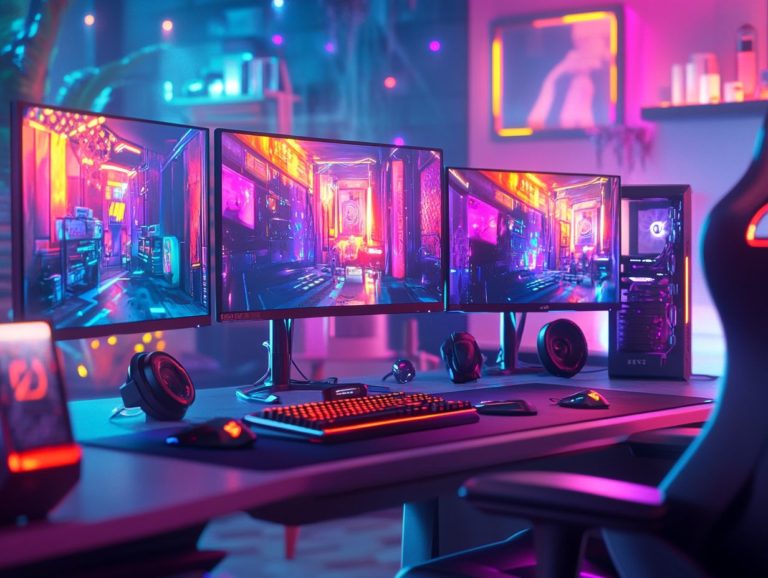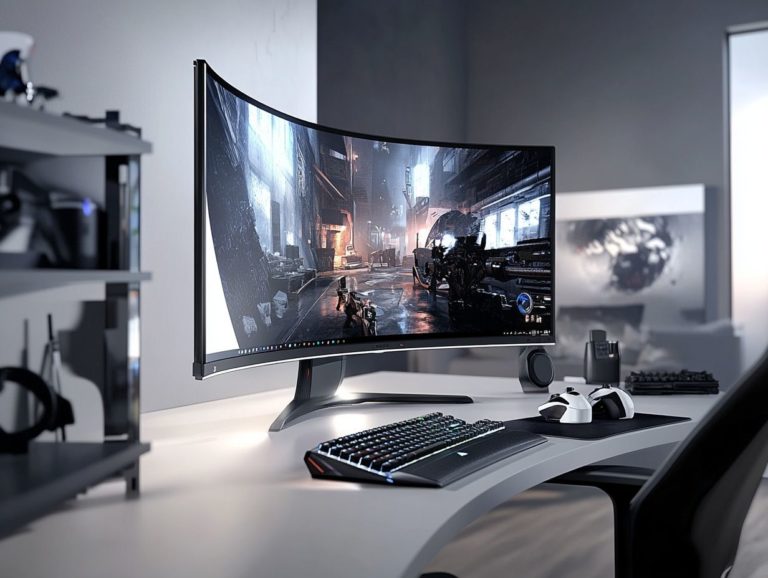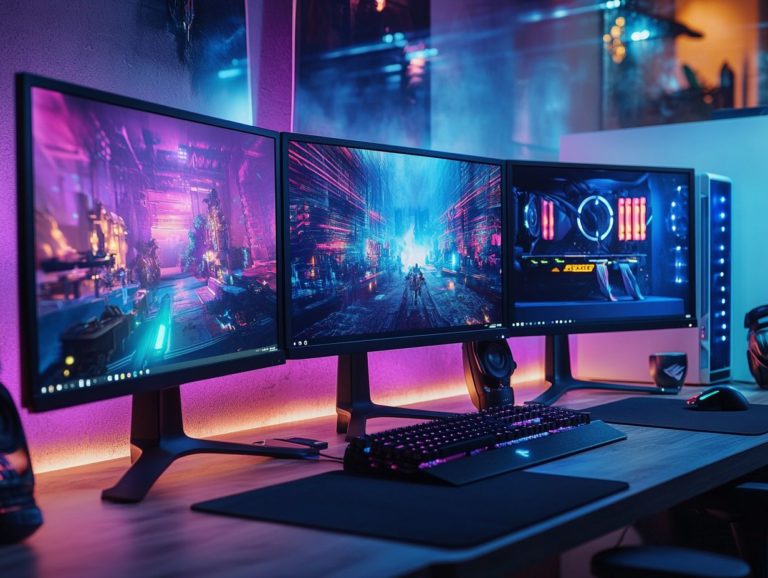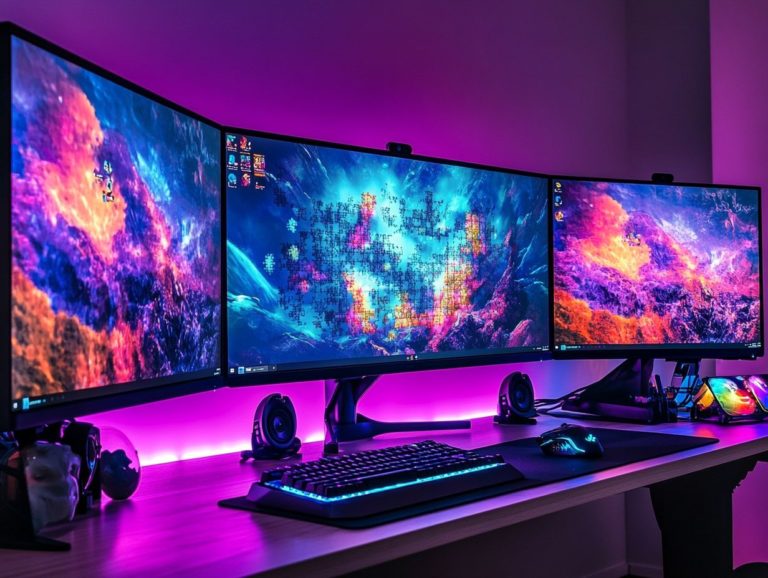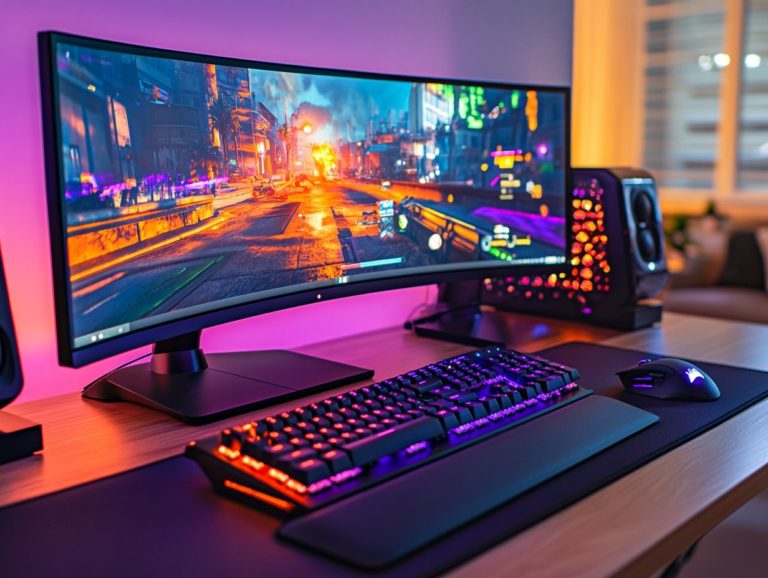how to maximize fps on your gaming monitor
In the realm of gaming, every frame matters. Grasping Frames Per Second (FPS) goes beyond mere technical jargon; it has the power to elevate your gaming experience significantly.
Dive into this article to discover the importance of FPS, examining the many factors that influence it on your gaming monitor. From hardware and software considerations to optimization techniques, it covers everything you need to know to boost your FPS effectively.
Additionally, you’ll find handy tools to track your FPS and make quick adjustments for the best experience, enabling you to enjoy smoother, more immersive gameplay. Immerse yourself in this guide to enhance your gaming setup.
Contents
Key Takeaways:
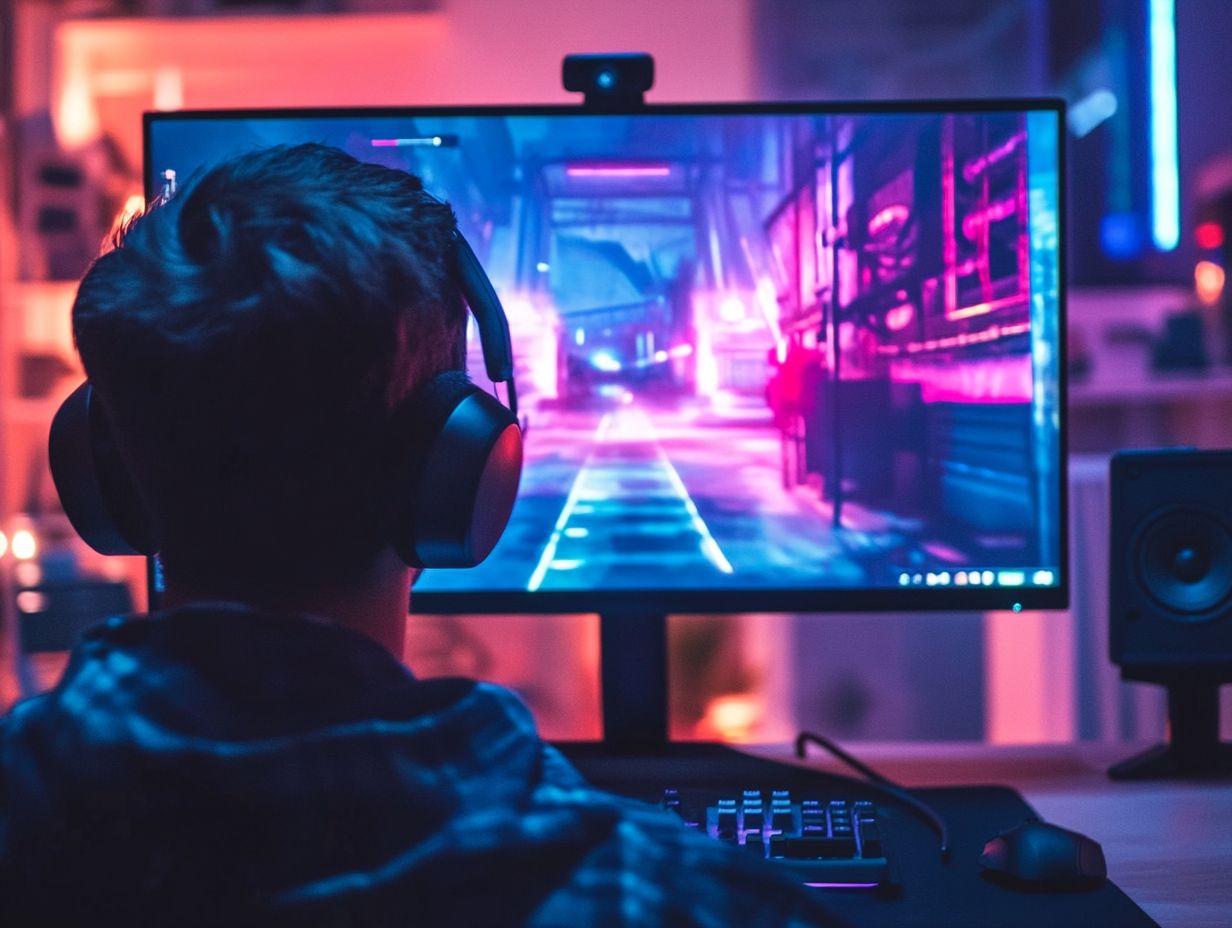
Optimize your gaming monitor for maximum FPS by adjusting settings and configurations, such as using a higher refresh rate and disabling unnecessary features. For detailed guidance on how to set up your gaming monitor for FPS games, consider both hardware and software factors that affect FPS, like your graphics card and game settings. Here are some key points to remember to maximize your FPS:
Understanding FPS and its Importance for Gaming
Frames Per Second (FPS) is a crucial factor that defines the quality of your gaming experience. It plays a critical role in performance, where higher FPS results in smoother gameplay and a more responsive feel.
Understanding FPS is vital for you as a gamer aiming to optimize your setup. It can profoundly influence visual detail and responsiveness during your sessions. This knowledge also encompasses how to optimize your gaming monitor settings, which can elevate your gaming experience, especially when paired with robust hardware like AMD Ryzen or Nvidia RTX graphics cards.
What is FPS and Why Does it Matter?
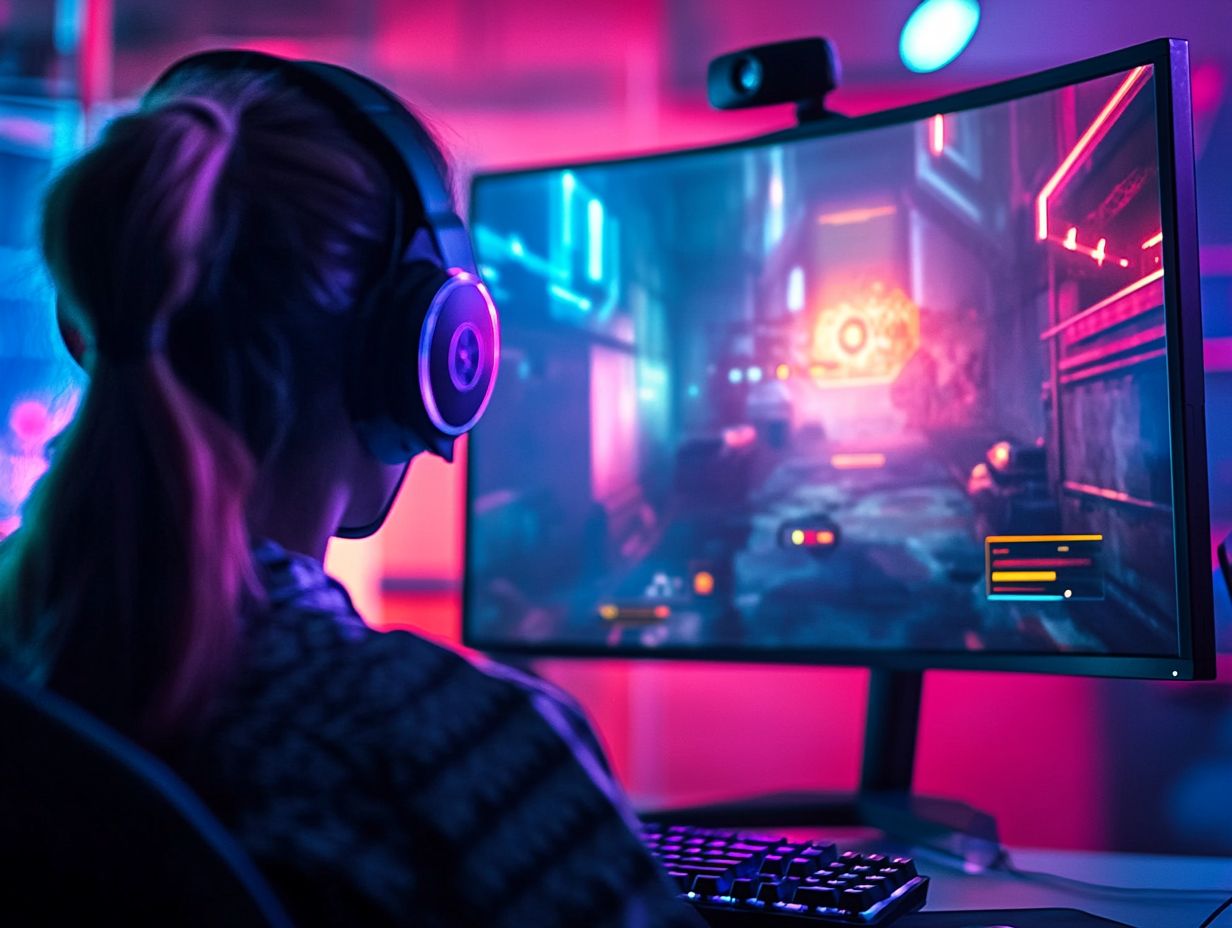
FPS, or Frames Per Second, is the measure of how many unique and consecutive images your graphics card can render in a single second while you’re immersed in a game. This metric is essential for determining the fluidity and responsiveness of your gameplay.
For example, when you play at 60 FPS, the experience feels significantly smoother than at 30 FPS, where you might encounter frustrating delays in controls that can lead to latency issues.
A higher number of frames per second allows you to enjoy more detailed visual settings, enabling you to set higher resolutions and graphical enhancements without sacrificing performance. Achieving a standard like 144 FPS in competitive titles such as ‘Counter-Strike: Global Offensive’ can drastically improve your reaction times, allowing for precise movements and providing that critical competitive edge.
In conclusion, maintaining a high FPS not only enhances your graphics but also elevates your overall satisfaction with the gameplay to new heights.
Factors that Affect FPS on Your Gaming Monitor
Several factors influence the FPS showcased on your gaming monitor, significantly impacting your overall gaming performance and experience. To optimize this, it’s crucial to understand how to sync your monitor with your gaming PC.
Key elements to consider include your hardware specifications, such as powerful graphics cards and processors.
Software configurations also play a vital role, encompassing your operating system settings and game configurations.
The refresh rate of your monitor is also crucial; higher refresh rates contribute to smoother gameplay by ensuring your monitor keeps pace with the frame rendering of your graphics card.
Hardware and Software Considerations

To achieve optimal FPS, focus on both hardware and software in your gaming setup. Make sure components like the graphics card and CPU are up to date.
Consider selecting high-performance options such as the Nvidia RTX series, known for its advanced graphics rendering that creates realistic lighting and shadows, or an AMD Ryzen CPU, which excels in multi-threaded tasks.
Regularly updating your drivers is crucial for maximizing performance. Outdated software can lower frame rates and introduce graphical glitches.
For example, a gaming rig equipped with an Nvidia RTX 3080 and an AMD Ryzen 7 5800X can experience significant FPS boosts in demanding titles when paired with optimal settings and frequent driver updates.
Don t overlook the importance of tweaking your in-game graphics settings. Enabling features like V-Sync or FreeSync can elevate your gaming experience, delivering smooth visuals while maintaining peak performance.
Optimizing Your Gaming Monitor for Maximum FPS
Get the most out of your gaming monitor for maximum FPS and elevate your gameplay!
Key adjustments involve fine-tuning your monitor settings, such as the refresh rate and game mode, ensuring they are in harmony with your graphics card’s capabilities.
By carefully calibrating visual detail and other graphical settings, you can find the perfect balance between stunning visuals and impressive FPS, minimizing lag during gameplay.
Adjusting Settings and Configurations
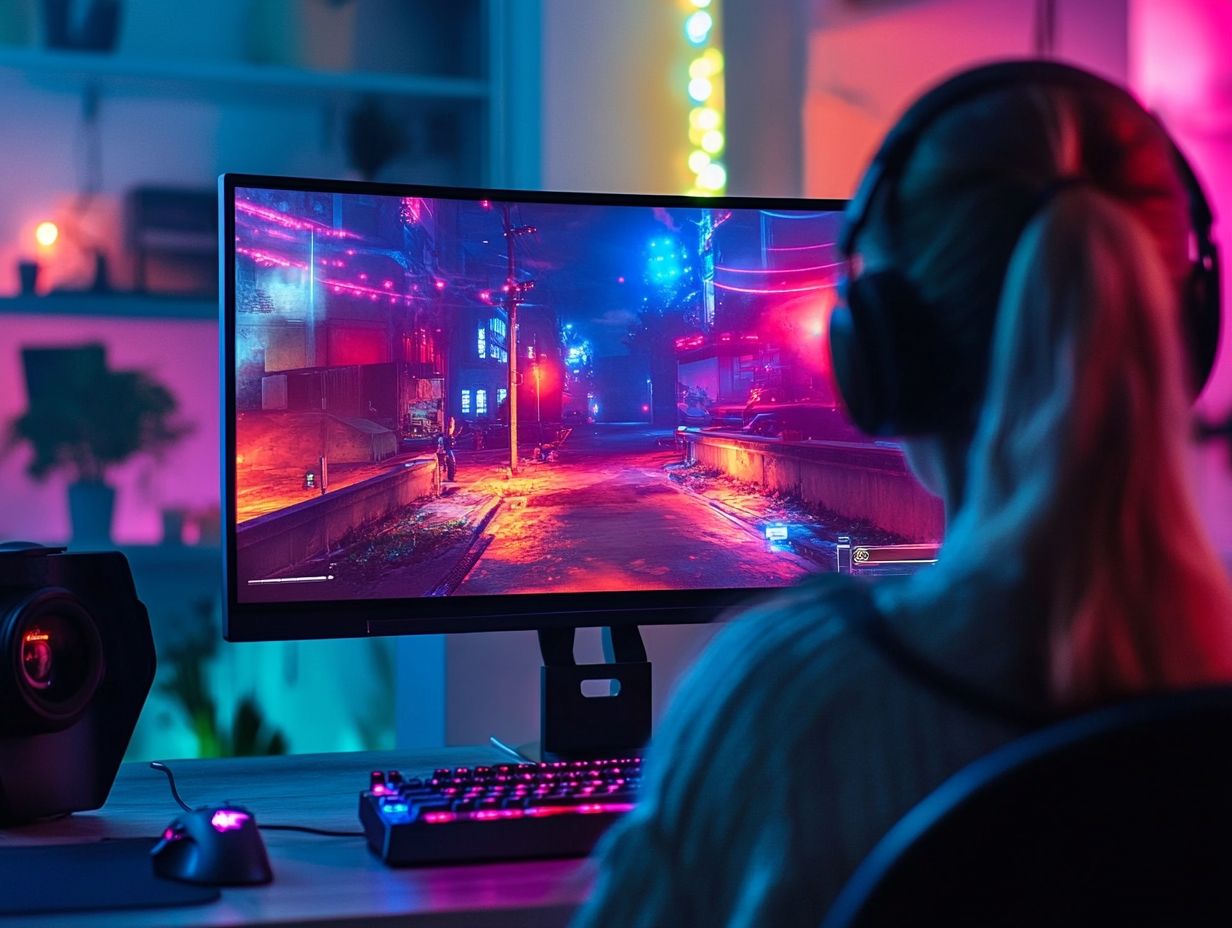
Adjusting your monitor settings and configurations is key for maximizing FPS and ensuring a seamless gaming experience.
To begin, access the display settings of your monitor to modify options like resolution and refresh rate.
Opting for a higher refresh rate, such as 144Hz or 240Hz, can significantly enhance motion fluidity on-screen, especially during intense gaming sessions. Additionally, learning how to optimize your controller settings for fps is crucial, as graphical settings like V-Sync and anti-aliasing can greatly impact your performance.
Engaging an FPS counter lets you track performance metrics in real-time, providing insight into FPS fluctuations. This knowledge gives you the power to fine-tune your settings for the best experience possible.
By making these adjustments, you ensure a smooth and responsive gaming adventure that keeps you fully immersed in the action.
Additional Tips for Boosting FPS
Enhancing FPS in your gaming setup is achievable with various performance optimization tips.
Upgrade your hardware now! Consider upgrading key components like your CPU or SSD, as this can lead to substantial performance improvements in gaming.
Overclocking your GPU can also provide a performance boost, giving you the advantage in frame rendering and overall graphical quality. This approach enhances your gaming experience while maintaining high-speed performance.
External Factors and Strategies
External factors like internet connectivity and system performance can greatly impact your gaming experience, affecting lag and overall FPS.
A stable, high-speed network connection is vital; anything less can lead to latency and packet loss, disrupting gameplay and causing frustrating lag spikes. Consider upgrading to a wired Ethernet connection to minimize interruptions.
Optimizing your hardware also makes a noticeable difference. Utilizing dual-channel RAM enhances data flow and improves overall performance.
Don’t forget to fine-tune your software settings as well. Reducing background applications and adjusting in-game graphics settings can lead to smoother frame rates.
By addressing these various elements, you can significantly elevate your FPS and enjoy a more seamless gaming experience.
Measuring and Monitoring FPS
Measuring and monitoring FPS is essential for anyone looking to enhance their gaming experience.
Utilizing an FPS counter provides real-time performance metrics that reveal the impacts of various settings and hardware modifications. This insight gives you the power to make informed decisions about performance optimization and visual settings, ensuring that every gaming session is as immersive and enjoyable as possible.
Start implementing these changes today for a smoother gaming experience!
Tools and Techniques for Tracking Performance
To track your gaming performance effectively, use tools like an FPS counter. It provides insights into your system’s capabilities.
Software like MSI Afterburner or Fraps gives real-time stats on frame rates. This helps pinpoint dips that hurt your gaming experience.
Configuring your in-game settings is crucial. Adjust options like resolution, texture quality, and anti-aliasing to influence your FPS.
Built-in game overlays display performance metrics. They help you fine-tune settings for the best balance of visuals and smoothness.
If you’re tech-savvy, monitor CPU and GPU loads with tools like HWMonitor or Nvidia Control Panel. These tools can uncover bottlenecks and highlight areas for improvement.
Optimizing your overall gaming performance can take your experience to the next level!

